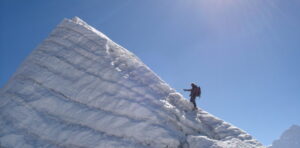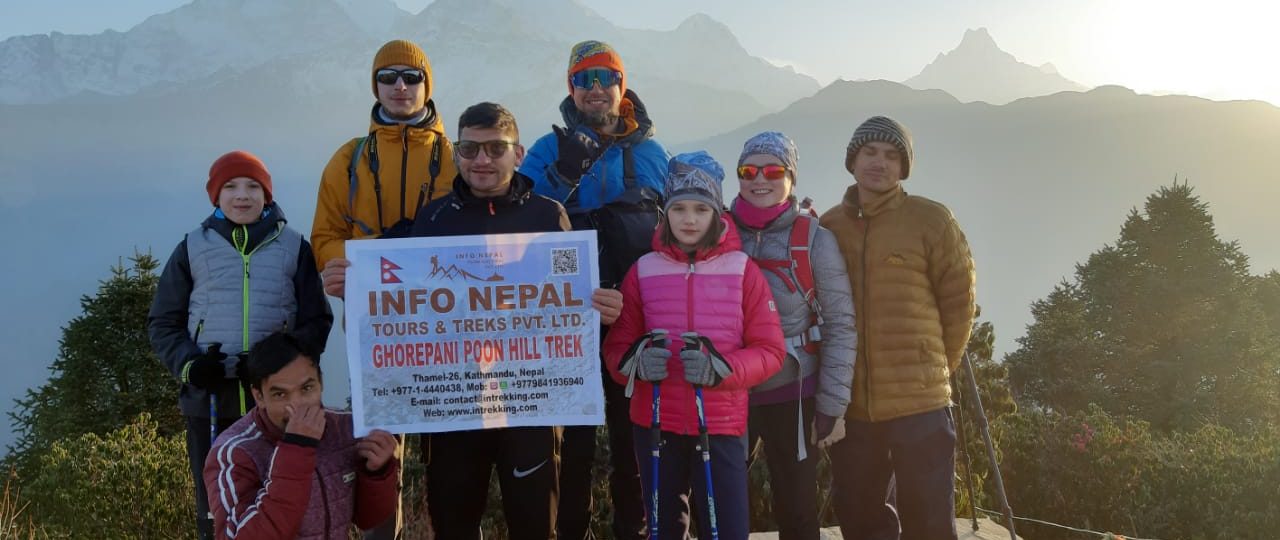
 Written By: Rajesh Neupane
Written By: Rajesh Neupane
When is the Best Time for Island Peak Climbing?
Enquiry Form
Island peak climbing is one of the best peak climbs in the Everest region. It is peak climbing to Imja tse at the summit of 6189 m above sea level. The interesting fact about Island Peak is that members of the 1953 Everest expedition named it as it looks like an Island from Dingboche.
The peak lies in an extension of Mount Lhotse’s ridge that runs south of Lhotse Shar peak. This journey starts with a thrilling flight to Lukla. Then, the route follows the classic way to Everest Base Camp until you reach Dingboche.
After reaching Dingboche, you will head towards the village of Chulukung and hike to Pareshaya Gyab, Island Peak Base. The next day, you head to the summit in the early morning.
Weather is always prioritized before any trek because weather conditions affect your trek the most. This blog is about the weather conditions of Island Peak to help you decide which season to choose and when is the best time to climb Island Peak. Let’s discuss further.
Best Time for Island Peak Climbing
Spring Season (March-May)
Spring is the perfect season for peak climbing. The weather is very stable and trekking-friendly during the spring season. This season starts in March and lasts till May. This is the busiest season, as all the trekkers and climbers want to experience the comfortable weather.
The weather is very dry and bright, with clear visibility. The warm and bearable temperature makes the trek very cosy and comfortable. Long days with a maximum of 9 hours of sunshine give more time for trekkers to explore the place.
The temperature during the day ranges from 17 to 25 degrees, while at night, it decreases to -15 degrees. This is called the blooming season so that you can cherish the beautiful blooming flowers and green vegetation on the journey. These floras decorate the trail beautifully, making it breathtaking scenery.
The terrain views are gorgeous, filled with rhododendrons and oak trees. All these things attract trekkers for a successful trek. That’s why the routes are quite crowded during the spring season. You get to meet people from all around the world. You can also meet an expedition team attempting to climb Mount Everest.
Autumn Season (September – November)
Autumn is also the best time for trekking. The ideal temperature persists throughout the season. The average temperature during the daytime is 15 degrees, while morning and night are cold, dropping to -10 degrees.
September is the start of this season, which comes after the monsoon. That’s why you can see some rainfall during early September. In mid-September, the skies become clear, offering uninterrupted views of mountains. Every angle falls perfectly for sightseeing.
After rainfalls, the weather becomes very clear and perfect, giving the best vision in Autumn. Waterfalls such as rivers, ponds, and lakes are refilled, regaining life. This season is perfect for enjoying water glory.
The fresh air and chillness it provides helps cleanse our soul. Except for the lack of flower blossoms, everything else is perfect for trekking. The stable, transparent, and dry weather attracts many trekkers. So, this season is also quite crowded.
Winter season (December – February)
Winter is off-season for trekking. The temperature is extremely cold and freezing. The chilly, speedy wind of the Himalayas makes cold weather even colder. There is a lot of snowfall in this region.
December, January, and February are the months of this season. The weather makes trekking complicated and challenging. Only professionals are suggested to trek during this season.
At lower heights, the temperature ranges from -5 degrees to 12 degrees, while at higher regions, the temperature ranges from -15 degrees to 8 degrees. Nights are unbearably cold.
There is less crowd during this season, which provides a different experience. The first week of December is still favourable for trekking, but the temperature starts dropping rapidly starting mid-December.
Summer season (June – August)
Summer is the worst time for trekking due to heavy rainfall. It rains every day in the three months of summer: June, July, and August. The weather is hot and humid. It is hot before it rains, and afterward, the clouds clear out, giving a chance to view the mountains.
Every season is doable except for summer. The rain clouds revolve around the skies, obstructing the view, which is the main reason for trekking. The temperature drops after rainfall.
The temperature ranges from 2 to 18 degrees in lower regions and -2 degrees to 10 degrees in higher regions. The lower region suffers high rainfall; however, after reaching the height, rainfall reduces.
The mid-monsoon, July, is the worst among all three months as it is the peak time for downpours. The trails are slippery and muddy. After Spring comes summer. So, early June is still feasible with no rainfall. Bring proper rain gear. The smaller crowd makes this season peaceful.
Frequently Asked Questions
What is the elevation of Island Peak Climbing?
- The elevation of Island Peak Climbing is 6189 m.
What is the best time for Island Peak Climbing?
- Autumn and Spring are the best times for Island Peak Climbing.
Can you see Mount Everest during this trek?
- You can see Mount Everest during the flight to Lukla on this trek.
How is Island Peak Climbing?
- It is a challenging trek, especially the ascent of Island Peak.
Are guides mandatory for this trek?
- Yes, guides are mandatory because it is very risky to trek alone.
Conclusion
Hence, This Island’s look-alike peak climbing is adventurous. Autumn and Spring are the most suitable times for trekking. The moderate climate makes the journey very comfortable. Winter and mainly summer are not suggested due to extreme coldness and downpours.
Climbing the peak is difficult, so choosing off-season makes it more challenging. It is very hard to predict the weather, so check weather forecasts regularly. Choose wisely and enjoy the trek.